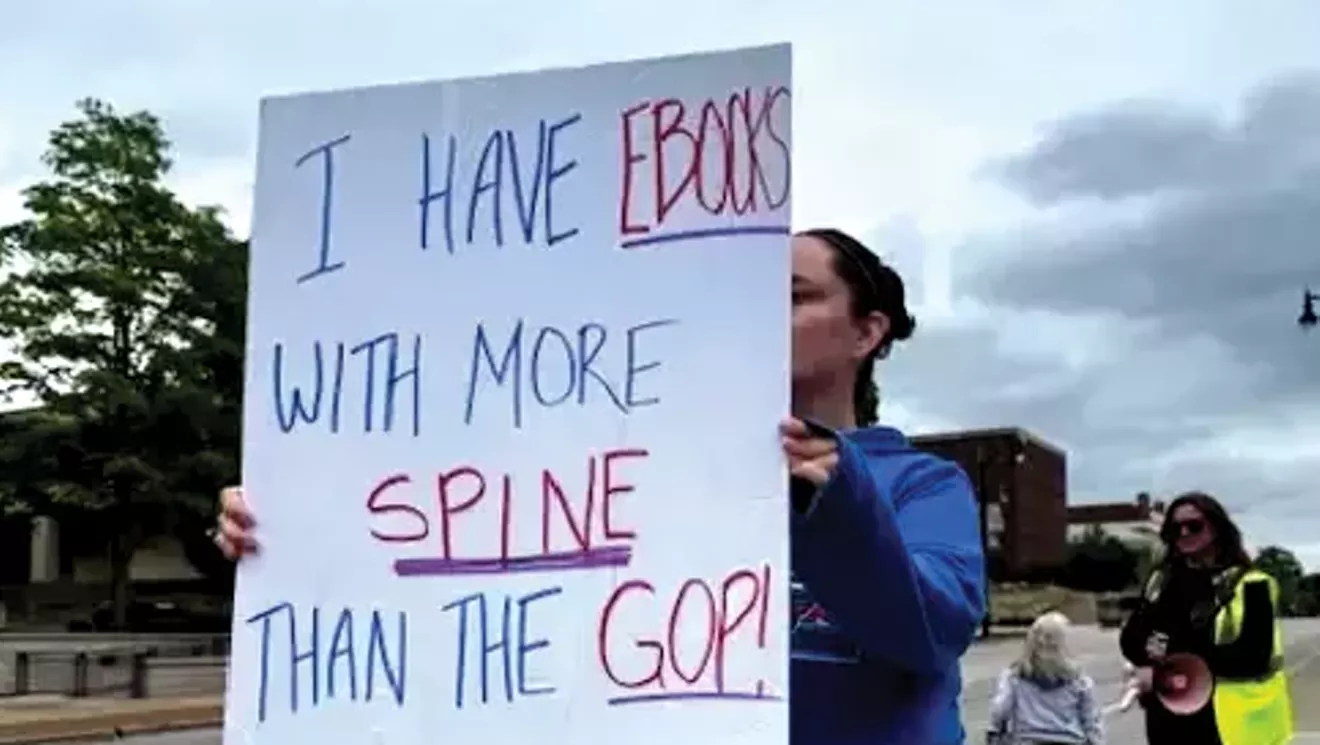
PHOTO BY KAREN WITTER
A 50501 protest took place in front of the Capitol on May 3. The grassroots movement has been organizing gatherings in all 50 states to protest the actions of the Trump administration, including seven so far in Springfield.
As an organizer for the 50501 movement, organizing protests to protect the Constitution and our democracy, I sometimes hear nonparticipants question whether protesting really makes any difference. Some people claim that it is merely symbolic or that it only makes the protesters feel better by allowing them to publicly vent their frustrations. The study of nonviolent resistance is not a popular field; but fortunately, a handful of scholars have produced solid research. So, what do history and the data tell us?
First, let me address why resistance needs to be, and needs to remain, nonviolent. Some might assume it is because of moral, philosophical or religious reasons. While those reasons might apply to a portion of the population, for the purposes of this discussion, the reason is strategic. Do not confuse nonviolent resistance with passivity.
Author and political scientist Dr. Gene Sharp studied uprisings throughout history and was surprised by what he found. He said, “Something unusual is happening in the world. The people without guns are winning.” Indeed, history shows that nonviolent resistance is far more successful than using violent tactics. In his 1993 book, From Dictatorship to Democracy, Sharp outlines 198 nonviolent strategies that have been used successfully to overthrow authoritarian regimes. The book has been used around the world as a guide to nonviolently remove numerous dictators.
Before he died, Sharp placed his book into the public domain so that it could be freely shared during times such as this. I encourage you to purchase a copy to support the nonprofit publisher, The New Press, but a free copy is available online.
In a separate research project, Dr. Erica Chenoweth and her colleague, Dr. Maria J. Stephan, collected data from all violent and nonviolent campaigns from 1900 to 2006 that resulted in the overthrow of a government or in territorial liberation. They analyzed 323 mass actions and nearly 160 variables. The results, once again, showed that nonviolent resistance was far more effective in producing change. In their book, Why Civil Resistance Works: The Strategic Logic of Nonviolent Conflict, Chenowith and Stephan list four key components of successful campaigns:
First, a movement with large, diverse and sustained participation is required. The research showed that once 3.5% of the population was actively and sustainably engaged in nonviolent resistance, no dictatorship was able to survive. On April 5, 2025, the Hands Off! day of protests, organized by various groups including Indivisible and the 50501 movement, was estimated at 5 million participants nationwide, or almost 1.5% of the U.S. population. That is a rapid buildup considering that the current administration had only been in office for two-and-a-half months at that time. To reach the tipping point of 3.5%, which is 12 million participants, the movement needs you. It seems too simple to think that we each have the power to stop a coup by simply showing up to protests on a regular basis, but the data from successful uprisings say otherwise.
Second, the movement needs to elicit loyalty shifts among security forces and elites. Security forces are important because their reactions to the protests largely determine whether violent enforcement methods are used. Elites include economic and business elites, politicians and the media. Massive, nonviolent movements influence public opinion and change the atmosphere, which disrupts the status quo. Security forces refuse to use violence against the peaceful members of their community. Business leaders make different decisions. Politicians question whether their loyalty to the regime will cost them reelection. Mainstream media gives more coverage to the movement, which then feeds the movement’s growth. When these shifts occur, the pillars supporting the dictator crumble. But these shifts are dependent on the movement remaining nonviolent.
Third, the movement needs more than just protests. There needs to be a variety of methods used such as boycotts, strikes, general noncooperation, etc. This is why Sharp’s list of 198 different strategies in the book From Dictatorship to Democracy is so important. Successful movements deploy as many different nonviolent strategies as possible.
Fourth, when major campaigns are inevitably repressed, the successful ones do not descend into chaos or opt for violence. Chaos and violence play directly into the regime’s strength. Governments will almost always have military superiority.
Throughout U.S. history, there are many examples of the effectiveness of nonviolent resistance. Most of the freedoms we enjoy today, from civil rights to workers’ rights to women’s rights and beyond, were not just freely given by a benevolent government. These rights were fought for through massive, nonviolent resistance.
I encourage you to get involved. The future of our democracy depends on you.
Kelley Hatlee started volunteering as an organizer with 50501 after attending one of the first Springfield-area protests in February. He is also a precinct committeeperson with the Macoupin County Democrats and volunteers as an activist and organizer with the Macoupin County Action Alliance.


